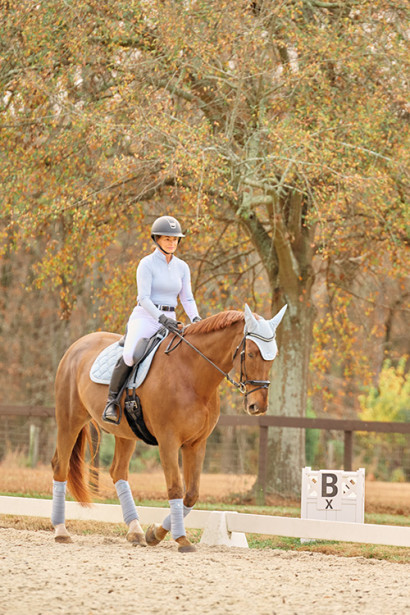How to Design a Dressage Musical Freestyle
Updated July 10, 2023

“I’d love to ride a musical freestyle.” Many riders from a variety of disciplines have made this statement.
Riding to music is one thing, and it has many benefits. You can block out other noise, get your horse used to sound, it helps you maintain a consistent tempo in a gait, and even taps into your creative side.
Riding an actual music freestyle is another challenge. Developing a dressage musical freestyle for competition at a recognized show takes a lot of commitment, strategic planning, and time. If you hire someone else to do it, it takes money. If you do it yourself, you can save but you must have an ear for musical phrasing, an eye for choreography, and a lot of patience! If you decide to design your freestyle, here are five steps to get you started.
1. Read the Rules
Read the show organization’s rules to know if this is truly something you want to do before investing heavily. For example, to be eligible to compete in a USDF freestyle at Training through Fourth level, you must have earned a 63% or better score at a recognized show at the highest test of that level. No “just” riding freestyles! This ensures freestyles do not become a circus, but demonstrate artistry with correct technique.
2. Learn Your Horse’s Tempo

Videotape yourself riding your horse at the walk, trot, and canter in a full-size arena for at least two minutes in each direction, right and left. Then, use this video to determine your horse’s beats per minute (BPM) for each gait. Include several of these if you plan on performing lateral work such as leg yield, shoulder-in, haunches-in, or half pass.
It can also be helpful to ride patterns and figures such as 20m and 10m circles, long and short diagonals, and simple and flying changes, so you know how long it takes to complete each movement.
3. Select Freestyle Music
Listen to lots of music to identify which songs are close to your horse’s tempos at the three gaits. You can create a spreadsheet of albums and songs because this can quickly become overwhelming. After a while, you’ll find yourself counting beats to music in the car, on a flight, while eating in a restaurant, or even while riding the elevator. You will develop an “ear” for the BPM that matches your horse’s gaits.
Next, play songs with the correct tempo while watching the video of your riding to figure out which genres make your horse appear to “dance.” Set to one music category, say classical, a horse can seem to drag his toes, be heavy-footed, and be earthbound. But watching this same video clip to a different music category, like show tunes, can make this horse appear to bounce off the ground enthusiastically.
4. Design Your Choreography

Here is where freestyle developers can go their separate ways. Some prefer to design choreography next, fulfilling the compulsory elements for the level of competition, taking into account your horse’s strengths and weaknesses. Then, set the music to it, adjusting the flow of movement to accommodate for musical phrasing.
Others, however, start by putting together the music and then designing choreography that fits the music. Whichever way you do it, double-check that you’re demonstrating compulsory elements for at least as much distance as the test says. Artistic impression - harmony, choreography, degree of difficulty, music, and interpretation - is a major part of your score.
5. Practice Your Musical Freestyle
Along with artistic impression, your freestyle is judged on technical execution of the movements. You must practice the freestyle - whether in the saddle or rehearsing in your head - until it’s memorized completely as going off course will bring your score down.
Another place “freestylers” differ is how many times they ride their freestyle to music before a competition. Some upper-level dressage riders prefer to never do the complete set in order until the day before the competition. This can have something to do with keeping the freestyle fresh and not having their horse anticipate movements. Others prefer to ride to the music as much as possible, working on nailing each movement in order and being sure the music fits their choreography just as they wish.